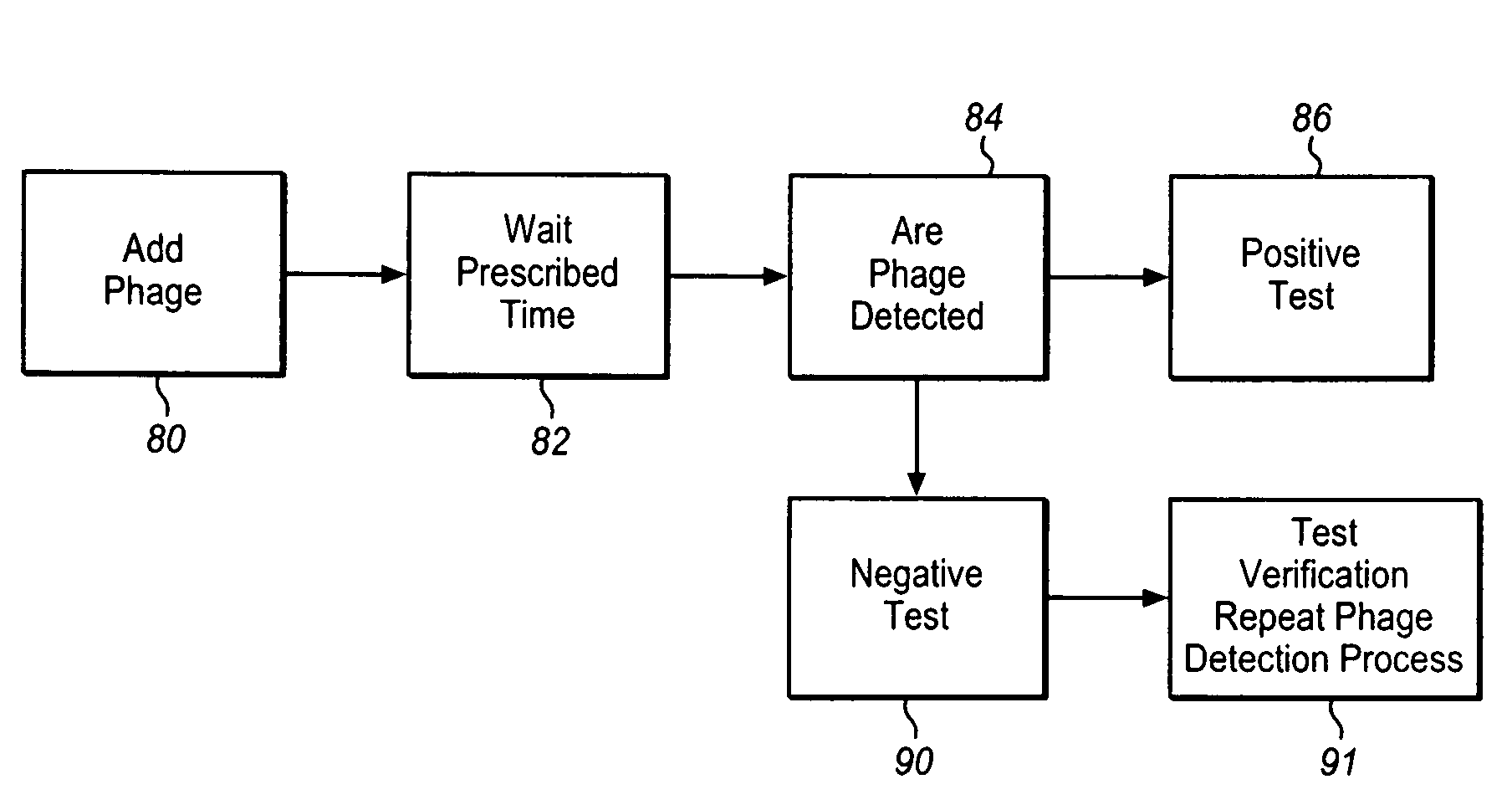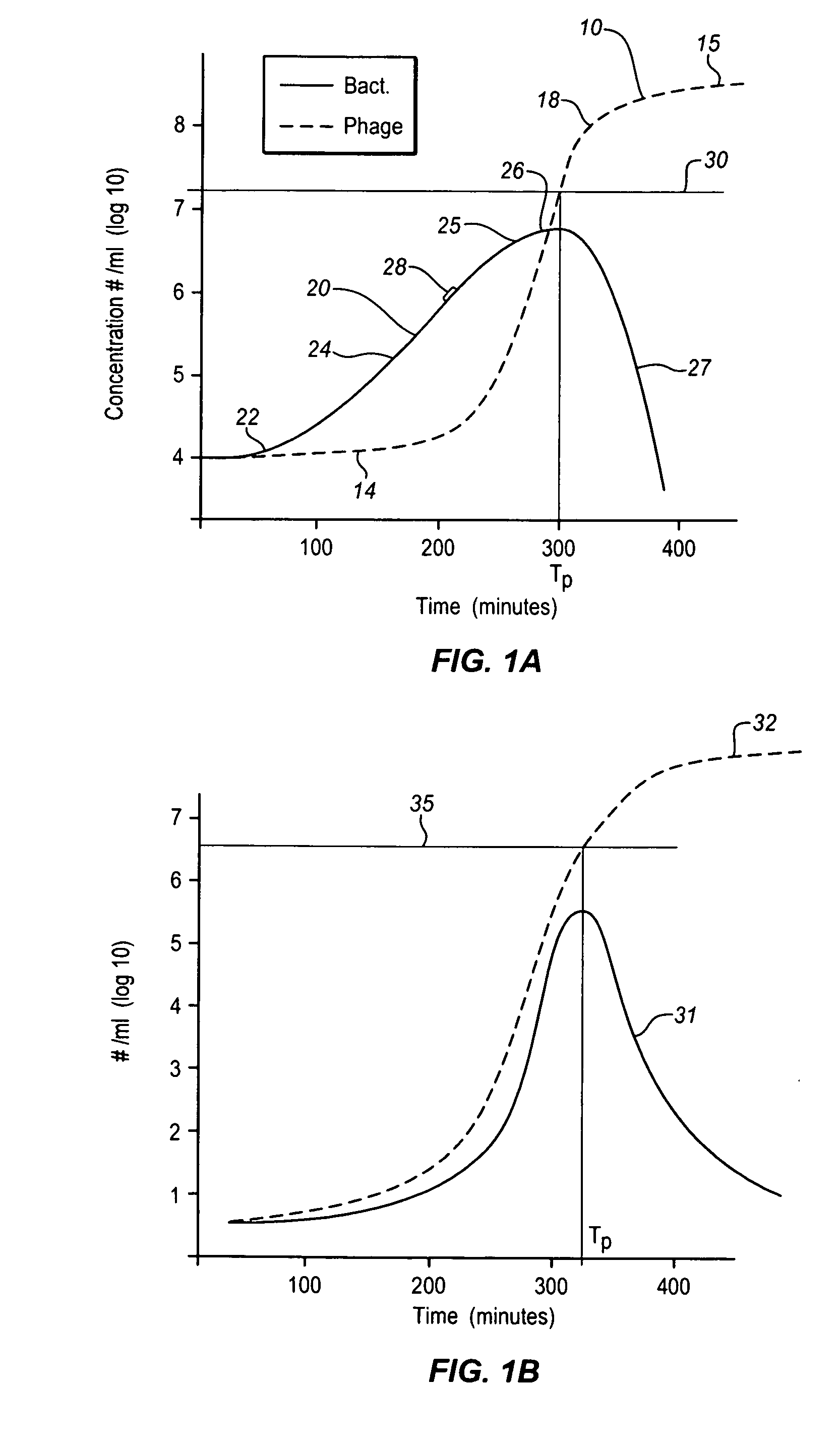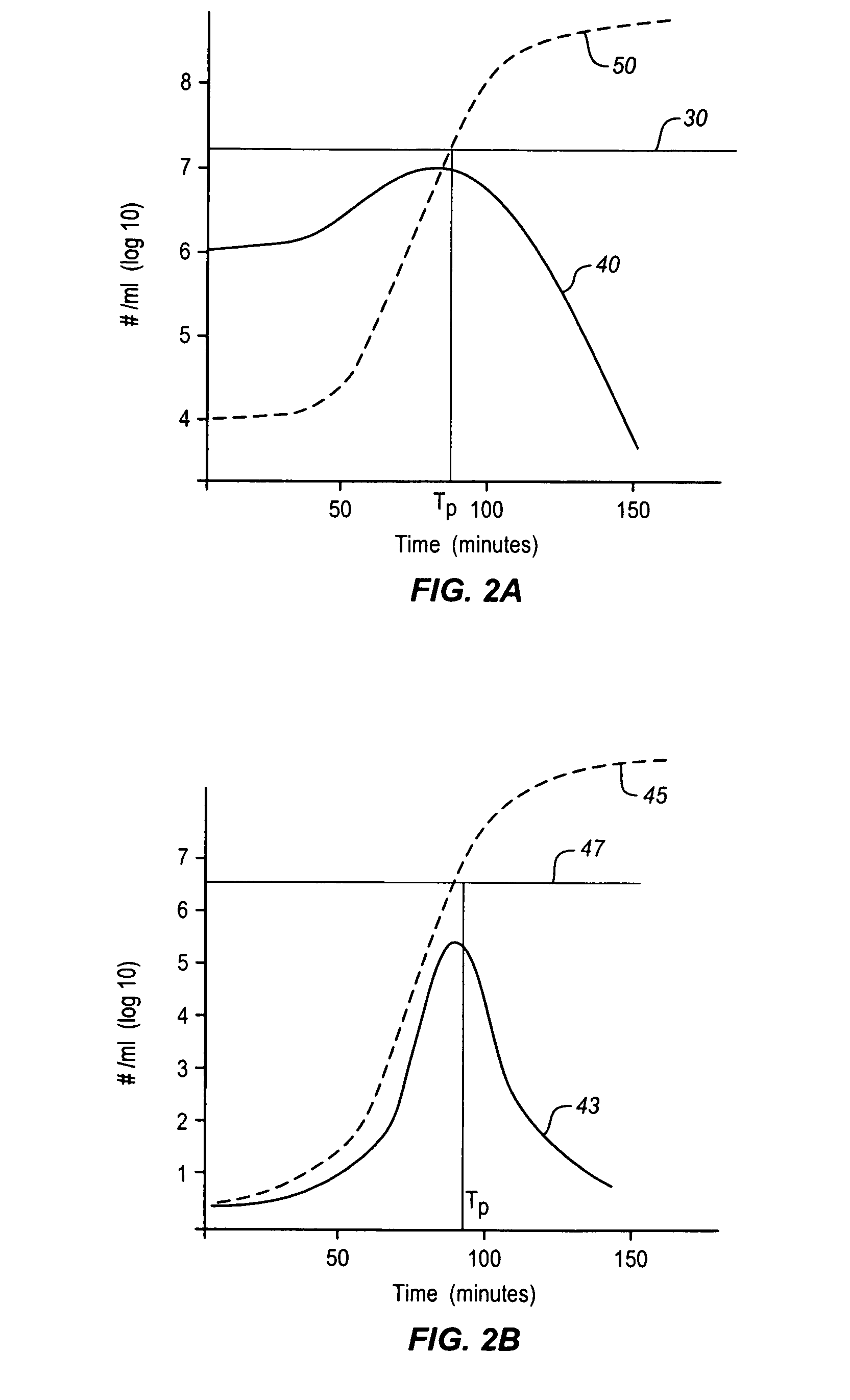Method and apparatus for determining level of microorganisms using bacteriophage
- Summary
- Abstract
- Description
- Claims
- Application Information
AI Technical Summary
Benefits of technology
Problems solved by technology
Method used
Image
Examples
Embodiment Construction
[0027]In this disclosure, the terms “bacteriophage” and “phage” include bacteriophage, phage, mycobacteriophage (such as for TB and para TB), mycophage (such as for fungi), mycoplasma phage or mycoplasmal phage, and any other term that refers to a virus that can invade living bacteria, fungi, mycoplasmas, protozoa, yeasts, and other microscopic living organisms and uses them to replicate itself. Here, “microscopic” means that the largest dimension is one millimeter or less. Bacteriophage are viruses that have evolved in nature to use bacteria as a means of replicating themselves. A phage does this by attaching itself to a bacterium and injecting its DNA (or RNA) into that bacterium, and inducing it to replicate the phage hundreds or even thousands of times. A particular bacteriophage will usually infect only a particular bacterium. That is, the bacteriophage is specific to the bacteria. Thus, if a particular bacteriophage that is specific to particular bacteria is introduced into a ...
PUM
| Property | Measurement | Unit |
|---|---|---|
| Time | aaaaa | aaaaa |
| Concentration | aaaaa | aaaaa |
| Minimum inhibitory concentration | aaaaa | aaaaa |
Abstract
Description
Claims
Application Information
 Login to View More
Login to View More - R&D
- Intellectual Property
- Life Sciences
- Materials
- Tech Scout
- Unparalleled Data Quality
- Higher Quality Content
- 60% Fewer Hallucinations
Browse by: Latest US Patents, China's latest patents, Technical Efficacy Thesaurus, Application Domain, Technology Topic, Popular Technical Reports.
© 2025 PatSnap. All rights reserved.Legal|Privacy policy|Modern Slavery Act Transparency Statement|Sitemap|About US| Contact US: help@patsnap.com



